A special part of any Tibetan New Year or Losar celebration is the eating of khapse, deep fried Tibetan cookies. This blog post will give you a glimpse of Dolma Ling Nunnery in India and the some of the preparations by the nuns for Losar. In the days leading up to Losar, the Tibetan nuns, like Tibetan lay people all over the world, will be working hard to prepare large batches of these crispy cookies.
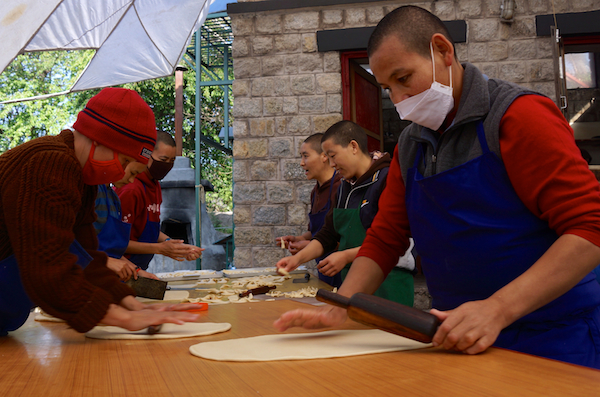
Tibetan Buddhist nuns at Dolma Ling Nunnery in northern India making khapse for Tibetan New Year. Photo from the Tibetan Nuns Project 2014.
Khapse (or khapsay) means literally “mouth-eat” and they are a staple of Tibetan New Year’s celebrations everywhere. While these biscuits are made for other celebrations as well, such as weddings and religious events such as the enthronement of a lama, it’s at Tibetan New Year that they are ubiquitous.
The dough for the khapse is usually made with flour, eggs, butter and sugar. It is then rolled out and made into different shapes and sizes. The most common shape is the small twisted rectangular pieces which are served to guests.
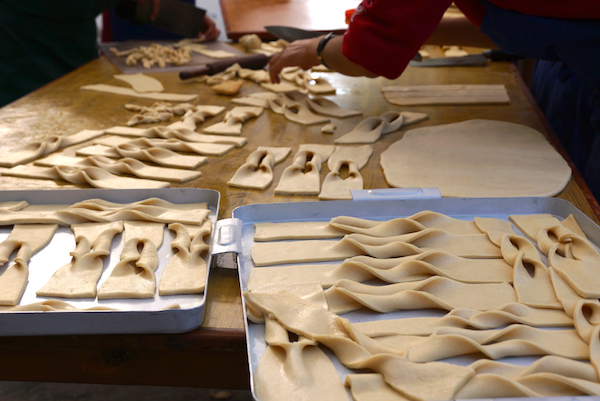
Tibetan khapse ready for frying. This shape is made by cutting the dough into a narrow rectangle and then making a slit in the middle. Then one side of the khapse is pulled through.
Larger and more elaborate shapes are made as well, including the so-called Donkey Ears or bhungue amcho (also known as khugo). These are large elongated hollow tubes of crispy pastry that are stacked up on the Losar altar as both a food offering and as a decoration. Strings of dried Tibetan cheese are draped over the top.
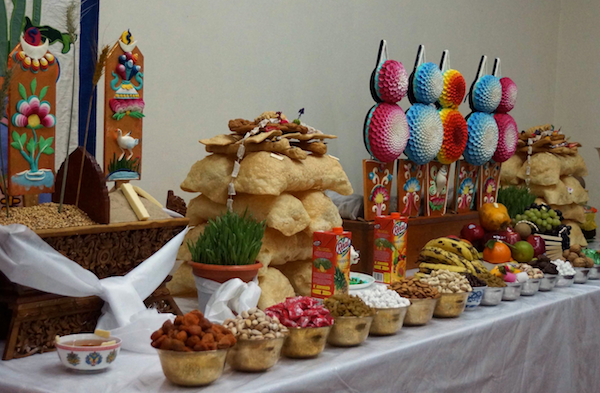
Stacks of a special type of khapse made by the nuns decorate the Losar altar at Dolma Ling Nunnery in northern India. Photo from the Tibetan Nuns Project 2014.
Traditionally, khapse would be deep fried in butter or mustard oil, but in exile the nuns use corn oil. The deep frying give the cookies their distinctive light brown or yellow color.
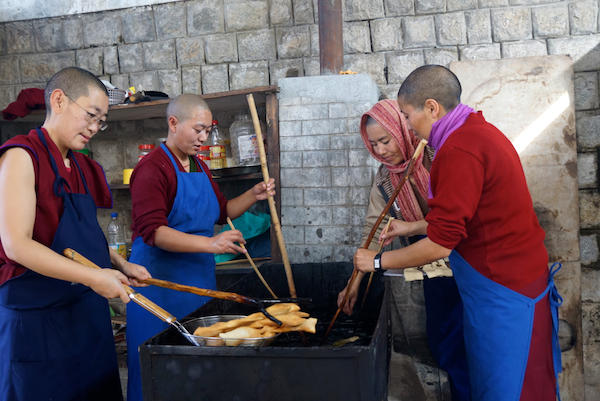
Inside the nunnery kitchen at Dolma Ling, the nuns fry large batches of khapse in big vats of hot oil.
You can make khapse at home. For a recipe for Tibetan khapse, visit our friends at YoWangdu Tibetan Culture. Happy Losar!

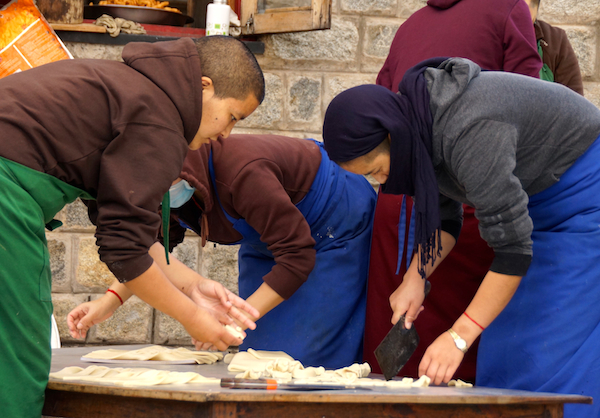
Happy loser shukseb nuns our lineage from jetsun lochen is the same – may all beings under the sky and in the known and unknown universes have peace and happiness – om